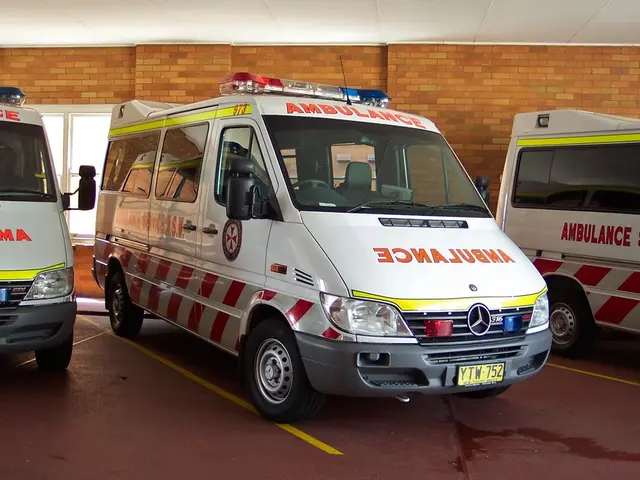Disaster at Heysel Stadium: 39 Lives Lost during Champions League Final Between Juventus and Liverpool, 4 Decades Ago
Remembrance of the Heysel Stadium Tragedy: A Day of Horror in Football History
The Heysel Stadium in Brussels, the venue for the EUFA Cup final on May 29, 1985, was meant to be a stage for glory. However, the 1-0 victory of Turin's Juventus over Liverpool, achieved by a penaly scored by Michel Platini, pales in comparison to the tragedy that unfolded before the match. Forty years later, we mourn the 39 lives lost in the ensuing chaos caused by fan clashes, just two hours before the scheduled kick-off.
At 7 p.m., thousands of spectators were pouring into the dilapidated stadium, with a total of 59,000 attendees expected. The antiquated stadium, with terraced stands, was not designed to accommodate such a large crowd, according to Belgian police commissioner Roland Vanreusel, who was on duty that night.
Aware of the reputation for violence of English hooligans and the propensity of Italian ultras to react strongly, Belgian authorities had classified the match as high-risk. As a result, fans were strategically distributed in the stands, with English and Italian fans separated by two neutral zones. However, hundreds of Italians were situated in this enclosure, encamped between Liverpool fans, with a flimsy fence as their only barrier.
The atmosphere grew heated, as the evening turned into chaos. Insults, object throwing, and assault gave way to an invasion of the Italian section by English fans. At 7:20 p.m., the police were overwhelmed, watching helplessly as hundreds of fans were crushed against the security barriers and trampled in the stampede. The incident resulted in 39 fatalities, including 32 Italians and two French, and nearly 500 injuries.
"The gendarmes had no experience with soccer matches. It was the first time they had set foot in this antiquated stadium, which should never have held 60,000 spectators", recalls Roland Vanreusel. "It was a nightmare! While a tragedy was unfolding, with the wounded and the deceased mounting, fans were singing and cheering on the other side of the stadium", continues the former policeman.
Three years later, on October 17, 1988, a trial commenced at the Brussels criminal court. On April 28, 1999, the verdict was delivered: 14 British fans were sentenced to three years in prison, with 18 months suspended and a fine of 15,000 euros. The general secretary of the Belgian Football Federation was sentenced to six months in prison, suspended, and a fine of 5,000 euros, while the captain of the gendarmerie in charge of operations was sentenced to nine months in prison, suspended, and a fine of 5,000 euros.
The appeal trial in 1990 confirmed the sentences and sentenced the then secretary general of UEFA to three months in prison, suspended, and a fine of 5,000 euros. As a result, UEFA decided to ban English clubs from participating in European competitions for three years. This ban was extended to five years following new incidents involving English fans during Euro 1988 in Germany. Liverpool FC was also excluded from European competitions for six years.
The Heysel disaster led UEFA to strengthen safety measures in stadiums. The most significant progress was the abolition of standing areas from 1990, followed by the implementation of a double barrier system around and at the entrances of stadiums. Responsible for the event's security at the time of the disaster, UEFA also delegated this responsibility to clubs and federations for international team matches.
"I still play this final, it hasn't left me, just as it hasn't left the minds of all those who were present that night, those who lost a loved one, those for whom everything changed in a few terrible minutes", said Michel Platini, the match's sole scorer, on the UEFA website, during the 30th anniversary of the tragedy, while he was still UEFA president.
Ultras and hooligans are commonly associated with football fan groups, but they are distinct in their behavior and ideology. Ultras are more organized, passionate fans who create elaborate displays to support their teams, while hooligans are known for their violent and disorderly behavior, often featuring extreme ideologies. These distinctions were sadly highlighted on that fateful day in 1985, as the world witnessed the horrifying consequences of fan violence.
[1] "Ultras – The History, Organization, and Culture." Daily Soccer News, https://dailysoccernews.com/ultras-history-organization-and-culture/.[2] "Hooligans – A Look at the History and Culture." Kickoff, https://www.kickoff.co.za/news/articles/world/hooligans-a-look-at-the-history-and-culture/679106.
- Despite the significance of the Champions League, the Heysel Stadium tragedy served as a grim reminder that general-news events, like crime-and-justice incidents, can overshadow sports victories.
- The Heysel disaster prompted UEFA to establish stricter safety regulations in European leagues, including the abolition of standing areas and the implementation of a double-barrier system around stadiums.
- The Heysel tragedy exposed the darker side of football fan culture, as the actions of ultras and hooligans that day underscored the dangers of extreme behavior and ideologies associated with certain fan groups.








